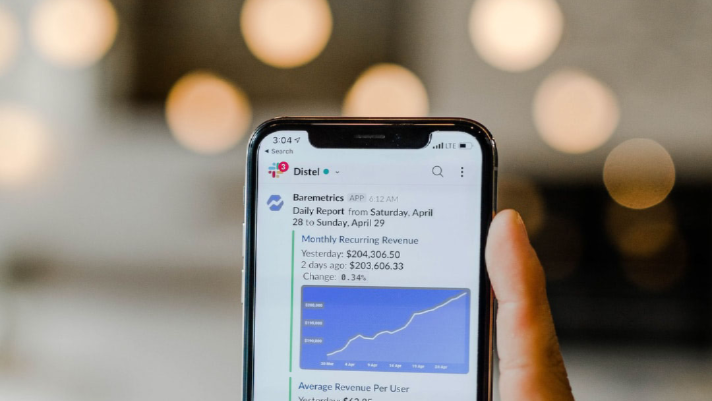Your Guide To Social Selling:
The chances are that you have already heard of social selling.
It simply refers to the process of developing relationships as part of the sales process – most often on social networks like LinkedIn, Twitter, and Facebook.
Social selling differs from social marketing because it focuses on sales professionals and cultivates one-on-one relationships.
Rather than circulating content to multiple buyers, you are nurturing your individual leads, engaging your buyers in an on-going, long term strategy.
In this article, we’ll start off by looking at why it should be a consideration for you and your business.
We’ll then look at a few best practices from those who have been there and experienced social selling first hand.
Finally, I’ll take you through some specific tips for major social media platforms to see how they differ from one another.
Why Social Selling is Important
The chances are, if you’ve got a Facebook Business Account, LinkedIn profile, or Twitter account and have engaged with other professionals, you have already begun social selling.
But why exactly has social selling become important?
It lets you build real relationships
Building relationships have always been crucial to what effective sales professionals do, and social selling is just a means of using online social tools to do this.
A study by CSO Insights found that 33% of B2B professionals reported social selling tools increased the number of leads they had to work with.
Furthermore, 39% reported that these tools reduced the amount of time they had to spend researching accounts and contacts.
The beauty of this technique is that, in contrast to cold calling or emailing, you already know so much about your lead.
It means that your first outreach can be relevant and tailored to their individual requirements.
What’s more, by building a strategy of social selling you can be introduced to other potential leads through mutual connects – building trust and respect that doesn’t exist with other sales outreach.
That probably explains why 87% of B2B buyers say that they would have a favorable impression of someone who had been introduced through their own professional network.
Your clients are already familiar and open to the concept
Social selling isn’t a one-way concept. The chances are that the potential clients you are reaching out to will have already begun listening and searching for services like yours which meet their needs.
For both individual and team goals, social selling produced better results for 182 end-users studied.
This means it’s a lot more like a two-way conversation than conventional sales, with clients carrying out research via the social selling process.
A study from LinkedIn found that 76% of buyers want to have a conversation on social media with potential providers, with almost two-thirds responding to salespeople who connect to share insights relevant to their industry.
Social selling is also crucial to the loyalty of your customers too. If you are able to share valuable and unique insight with our leads, you are more likely to convince them to stick with you.
Your competitors are already using social selling
The 2018 State of Sales report from LinkedIn shows that over 80% of sales professionals are using social selling tools already, with the majority stating that these tools are critical to meeting their sales quotas and goals.
Coupled with this is the fact that 72.6% of salespeople who use social media outperform their colleagues who aren’t using it.
If you are not keeping up with your competitors and using these social selling tools, you’ll not only be falling behind them but you won’t be attracting the best recruits to your business in the future.
Social Selling Best Practices:

Now we’ve got some idea about the importance of social selling, I’ve pulled out some best practices so you can make the most of your selling strategy.
1. Provide before you take it
I already touched on this in my point above, but it’s important to give something to your leads before you ask for something from them.
All those who have the most success in social selling are the ones who lead with something of value to their target market.
It costs little effort from your side, and as long as the content you are providing is clear and concise in showing the value to your lead it will lead to good results.
There is no need to immediately follow up your outreach with a pitch, simply send them the helpful information and develop your credibility with this source.
Keep in mind that building relationships that garner results take time and patience from your side.
2. Perfect your follow up process
Social selling is a waste of time if you only go for the easiest leads and don’t follow up on trickier prospects.
The vast majority of successful sales come after at least five messages.
The best clients and highest sales come through relationships in which sales teams have taken the time to build themselves.
Therefore, over time and through trial and error, you can begin to build a follow-up process that you find works for you.
Once you’ve got an idea of what works, nail down that process, and implement it across your sales team.
3. Reach out with a relevant message
No matter the platform for which you are carrying out social selling, do your research beforehand.
Find out what connections you have in common with your potential prospect.
Think about what messages and ideas you can connect on and avoid pitching yourself or your business.
Research your niche and see if there are any useful resources that will be useful for your prospect.
Once you’ve developed a rapport with your prospect and get a conversation going, then you can start pitching your message while still focusing on sustaining and building trust.
4. Be proactive and engage
Believe it or not, social selling requires you to both be social and to sell! In order to get the best results, you need to do both of these effectively.
Find high-quality content that is relevant for your prospects and use it to open conversations with them.
If you don’t have success at first, don’t sit back and wait for results to roll in.
Engage with others, join relevant groups for your target market – be proactive in all your social selling efforts!
Tips for social selling on different platforms
With these best practices in mind, let’s look at a few tips for social selling on specific channels.
The social network labels itself as a professional and business-oriented service, so it makes sense to start here when looking at B2B social selling.
According to their own statistics, half of all B2B buyers will use LinkedIn as a resource when making purchasing decisions.
5. Build your network
Use tools like LinkedIn advanced search let social sellers discover potential prospects by searching within your network.
6. Increase your credibility
Having endorsements and recommendations on LinkedIn can help to establish a good reputation with new prospects viewing your profile.
Highlight your expertise relevant to their industry and bring attention to how you’ve helped others like them achieve their targets in the past.
7. Use Sales Navigator
LinkedIn’s own professional social selling tool is a means of finding the right buyers, getting access to key behaviors of your target groups, and giving you the tools to engage with prospects using personalized outreach.
The drawing point of Twitter from a social selling perspective is the ability to build Twitter Lists for specific target groups.
These are simply finely-curated feeds of all the people you want to hear from, or monitor, on a given topic.
By keeping interest groups in distinct lists like this, you can monitor and engage when the time is right, filtering out irrelevant content from your feed.
8. Competitors
Twitter lets you set up private lists which means you can keep an eye on your competitors without having to follow them.
Intelligence on who they are engaging with and how they are doing so can inspire your social selling efforts as well.
9. Potential Leads
Again, keep this list private as you don’t want to share information on potential leads with your competitors.
Monitoring a list of potential future customers means you can reach out when the time is right. E.g. when there is a question, request for help, or issue mentioned when you can step in to help and begin a valuable interaction.
10. Customers
Keep an eye on the customers you already have with a curated Twitter list.
Make sure you are reaching out to engage with them when it’s relevant and you are able to add value to their questions or issues.
Unlike LinkedIn, this social network has more associations with personal life so be careful when reaching out to prospects.
If they are members of business groups in their niche and are networking with others to engage and share ideas, it’s probably a safe bet that they won’t mind you reaching out to them.
11. Engage and communicate with followers
If you run a Facebook business page, start engaging in meaningful conversations with your followers.
Ask questions to spark debate and post content which adds value and establishes your knowledge about certain subjects.
12. Reach out through Facebook groups
There are thousands of relevant groups on Facebook that regularly engage in a lively debate, problem-solving, and Q&A sessions. Browse the ‘Discover Groups’ page to find groups that might include people matching your target customers.
Thousands of group members for particular niches will include prospects who will be actively interested in your services.
Do your research first to find the right groups, then reach out with content you know provides value.
This year, we will see artificial intelligence tools that should prove useful in boosting sales. Learn more here.
Summary – Social Selling Done Right
Your prospects, existing customers, and competitors are all using social media for business.
Implementing social selling strategies will undoubtedly benefit your overall sales if done well.
Social selling should be regarded merely as an additional set of tools to use in your daily outreach processes.
The aim should always be to maximize the benefits of existing relationships and to build an engaged network of prospects who actively want to hear from you.
It may be a challenge to get started initially and should be used alongside your existing sales prospecting methods – not as a replacement.
Once you begin to gain respect in your niche and build your presence, you will find that the processes become easier and the benefits begin to outweigh the challenges.
About the author:
 Ben Culpin is a content marketer for WakeupData, a data feed management company driven by its mission to help empower e-commerce businesses. Check out the WakeupData blog and connect with him on LinkedIn and Twitter.
Ben Culpin is a content marketer for WakeupData, a data feed management company driven by its mission to help empower e-commerce businesses. Check out the WakeupData blog and connect with him on LinkedIn and Twitter.
Are you keeping up with the AI marketing shift? If not, you're leaving opportunity and revenue on the table.
Smarter Marketing Starts Here
Subscribe to receive actionable AI marketing tips, emerging trends, and tools that help you stay ahead—delivered straight to your inbox. We believe in protecting your data and privacy.
[newsletter_form]

